Four
THE BALDWIN SPECIALS
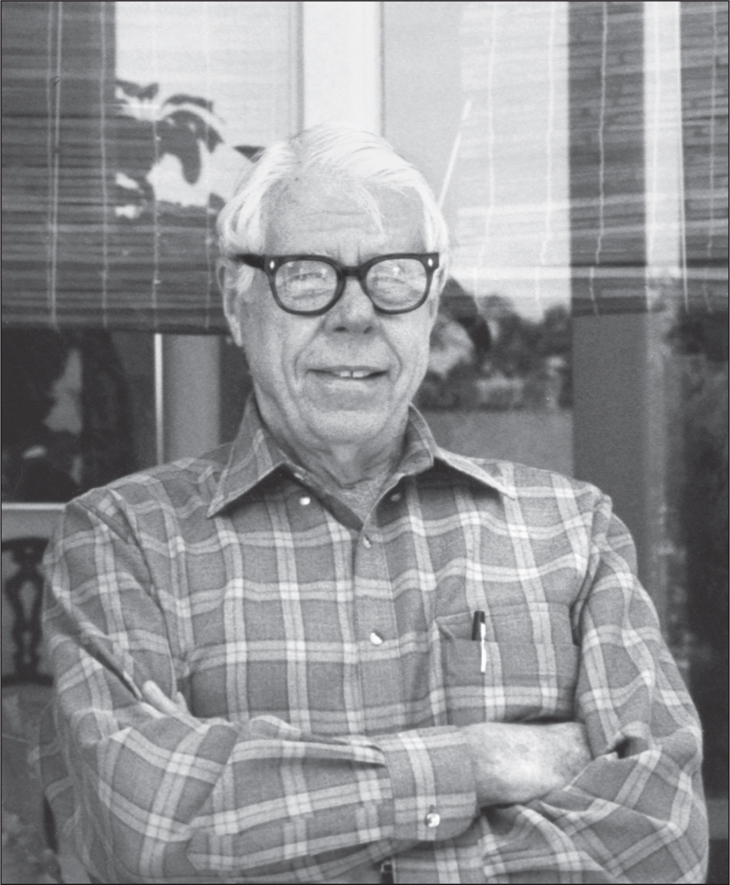
Willis M. “Bill” Baldwin, creator of the Baldwin Specials, was born in Santa Monica, California, in 1913 and moved to Montecito in the early 1940s. While working in the aircraft industry, he acquired a high degree of skill in metal fabrication, welding, and general mechanics. A natural engineer, he combined these skills with a great sense of style and built a series of “sports rods” that challenged and often beat the best European sports cars around at the time. (Courtesy of the Baldwin family.)
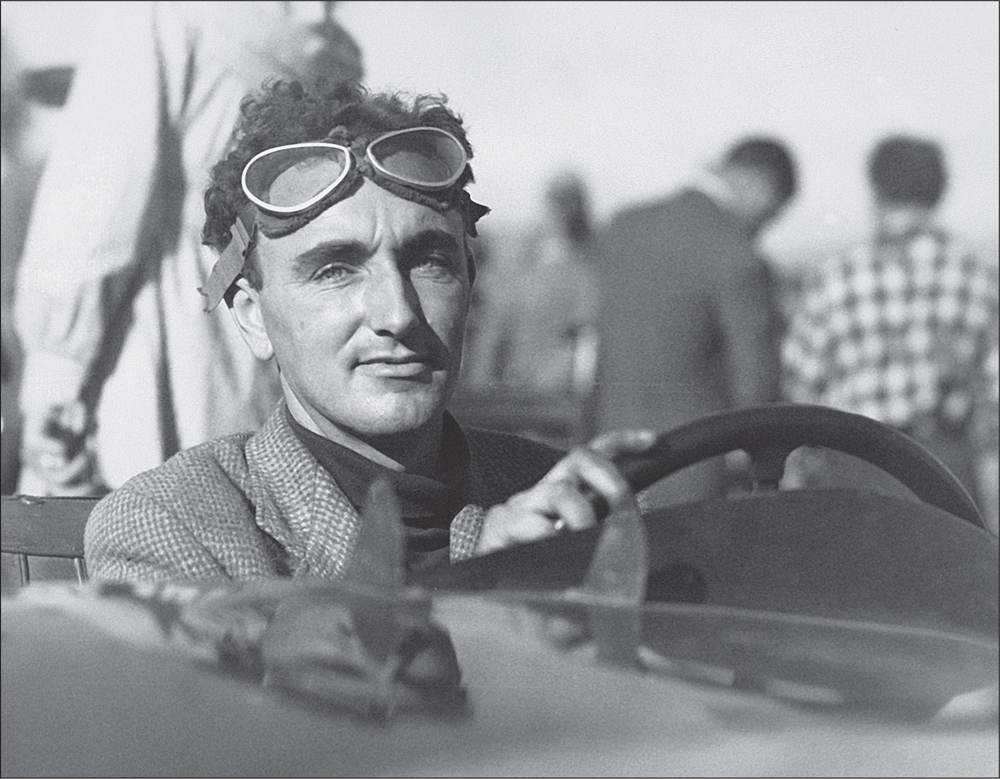
One of the most interesting figures at Goleta in the late 1940s was Philip Payne, owner and driver of the first Baldwin Special. Born in Portsmouth, England, Payne was employed during World War II as an aeromechanic by Gloster Aircraft, where he was involved in the development of one of the first fighter jets, the Gloster Meteor. After the end of the war, Payne traveled to America by ship, bringing with him his wife and a Brooklands-Riley sports car. The two proceeded to drive from New York to Los Angeles in the Brooklands, and they settled in the Laurel Canyon area of Hollywood. Philip was quickly offered a job as mechanic at International Motors in Hollywood, a dealer of British and European cars to Hollywood film stars and other celebrities. He also became part of the local hot rod scene, joining the Glendale Sidewinders, which became California Sports Car Club. (Courtesy of Stephen Payne.)
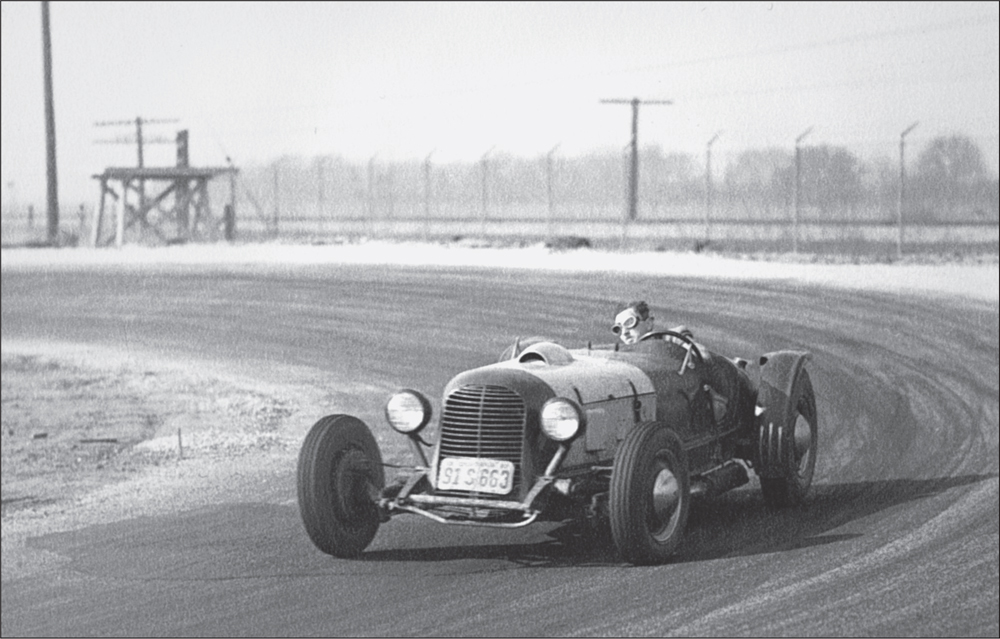
Sometime in 1947, Payne acquired the first of the specials built by Montecito resident Willis “Bill” Baldwin. He raced the sports rod successfully throughout Southern California between 1947 and 1949 before returning with it to England, where the British press and public had a hard time believing that an American hot rod could regularly attain speeds over 100 miles per hour. The Baldwin/Payne Special, as it came to be known, was run competitively in England until the early 1950s, and Payne drove it regularly until 1959, when he retired it to start a family. Payne passed away in 1981, and today, the Baldwin/Payne Special is owned by his son Stephen Payne. (Courtesy of Stephen Payne.)
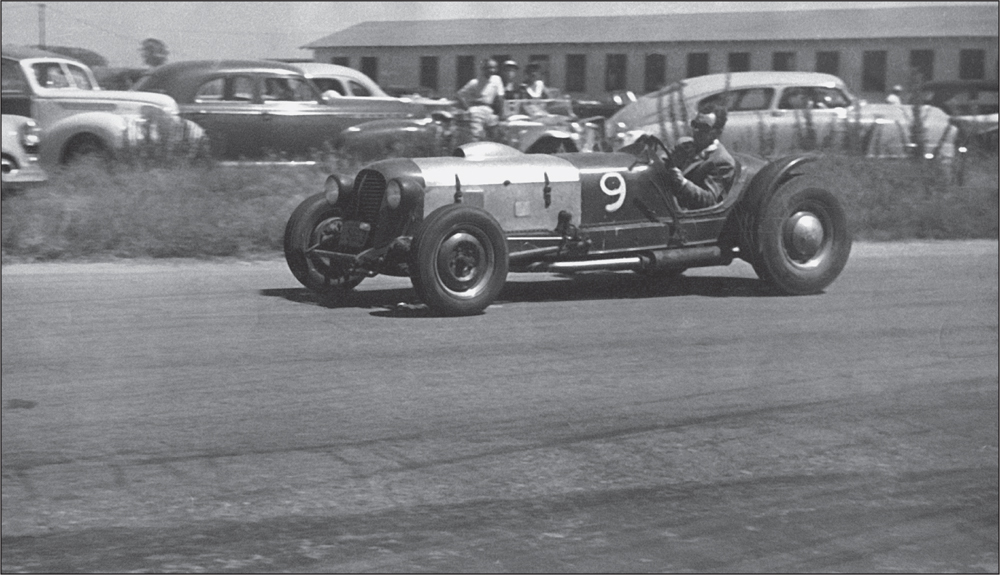
Philip Payne is seen racing at Goleta on August 7, 1949, when he took first place in the Class III CSCC timing trails. The first Baldwin was an interesting mix of British racing style and American engineering, outwardly appearing similar to cars seen racing at the famous prewar English racetrack Brooklands. This shot is looking southwest toward the airport. (Courtesy of Stephen Payne.)
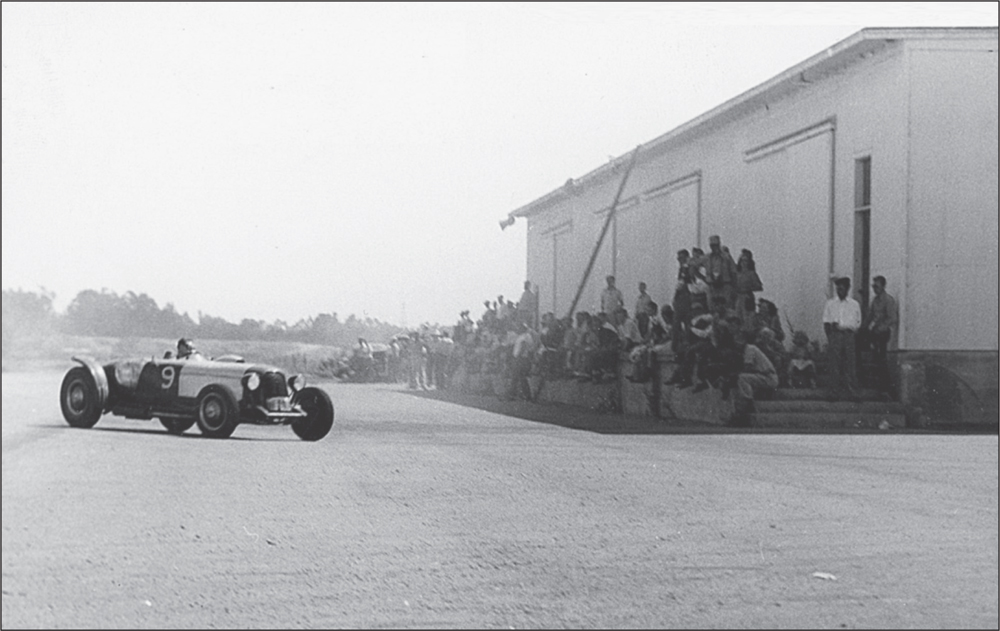
Seen here from another direction, Payne is muscling the Baldwin around the course that circled the old air base warehouse north of the drag strip starting line. Some of the early CSCC events were held here; later races would be held on a course that ran around the unused taxiway and hardstand area in the northeast corner of the airport. (Courtesy of Stephen Payne.)
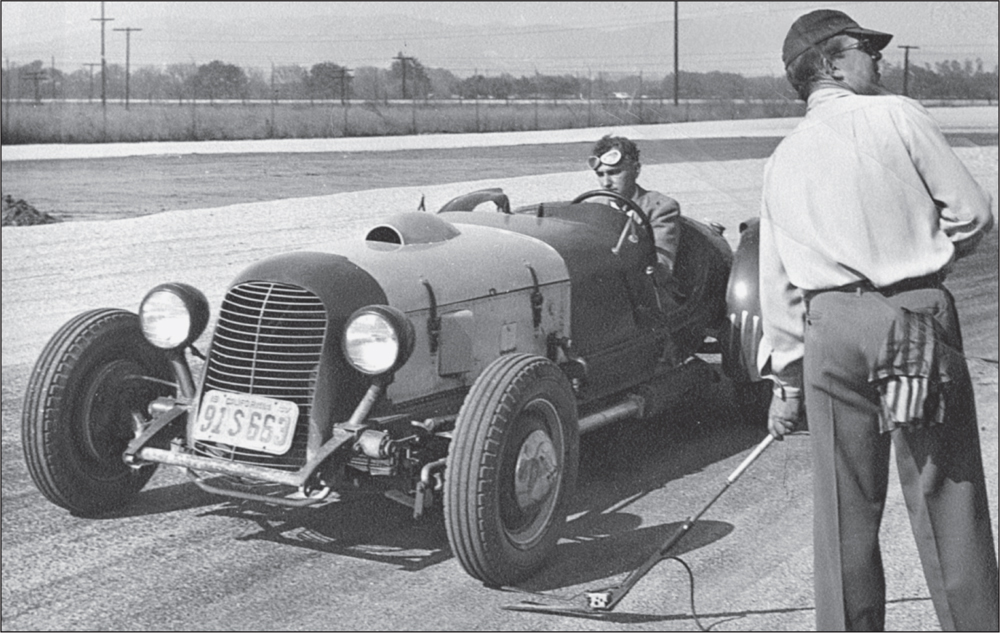
Willis Baldwin’s first special used a modified 1932 Ford frame as a foundation. The center X-frame was removed and replaced by tubular cross members. The engine was moved 15 inches to the rear and lowered for better balance, and the suspension was improved. Instead of a Ford roadster body, the radiator shell and cockpit were fabricated from pieces of an old Dodge body shell. The hood was aluminum sheet. The air scoop visible on the hood was salvaged from a jet airplane, and the radiator grill was made up of welding rod. (Courtesy of Stephen Payne.)

When Payne purchased the special, it had a 346-cubic-inch Cadillac flathead V-8. He quickly replaced that engine with a Mercury AB block of 249 cubic inches and equipped with an Isky camshaft, Evans heads, and a tri-carburetor setup, producing 175 horsepower at 5,000 revolutions per minute. Power was transferred via a lightened flywheel, 10-inch Mercury clutch, and Ford three-speed transmission to a 3.78:1 rear end. The Baldwin, with Payne at the wheel, is seen here at El Mirage Dry Lake for a CSCC/Russetta timing meet on October 10 1948, in which it did a quarter mile in 8.8 seconds, reaching 102.27 miles per hour. (Courtesy of Stephen Payne.)
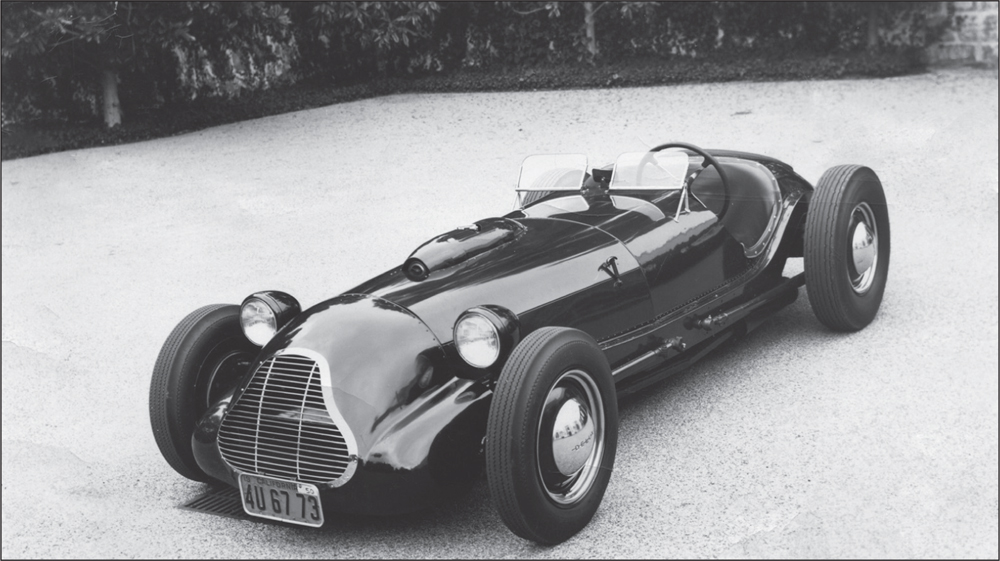
Baldwin’s second special, commonly called the Baldwin/Mercury, and was built over a 12-month period in 1948–1949. It was based on a wrecked 1946 Ford Tudor; Baldwin discarded the Ford’s body and started with a clean slate. The result was this roadster, similar in appearance to an Indianapolis racer, or even more so to the Allard J2. (Courtesy of Lee Hammock.)
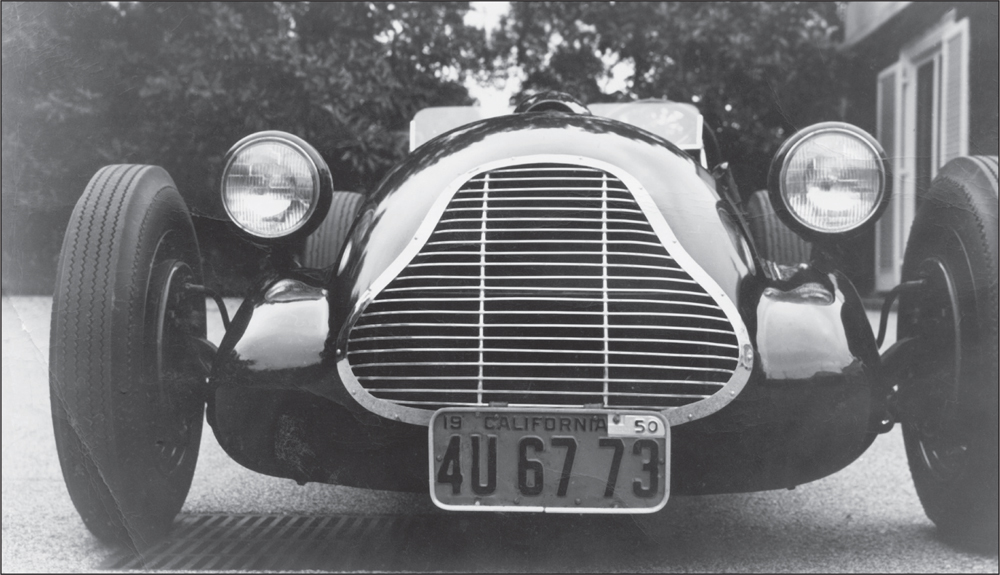
In similar fashion to the first car, the nose of the Mercury Special was made up of old body shell parts, in this case Plymouth. Baldwin fashioned the radiator grill out of an old refrigerator shelf, carrying on his philosophy of using as much recycled material as possible. The rear body used Chrysler fender sections in its construction. (Courtesy of Lee Hammock.)
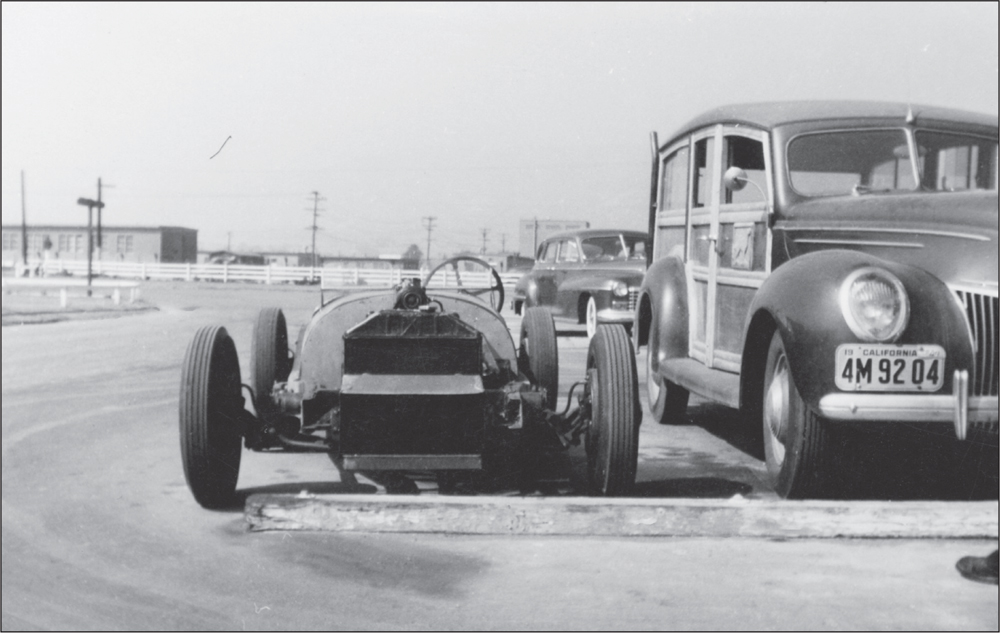
This shot shows the stepped-radiator arrangement on the special. In order to clear the low-profile body, Baldwin cut the radiator in two and placed the lower section about a foot forward of the top. He intended to put a Rootes blower in the space between. The front suspension was stock Ford. (Courtesy of Lee Hammock.)

This shot was taken in the parking lot at Goleta in 1949 during the unfinished special’s testing. The frame was shortened by 14 inches, and as with the Baldwin/Payne, the X-frame was removed and replaced by tubular cross members. The only modification to the suspension was the decambering of the rear transverse springs in order to compensate for the much lighter load the car was carrying. (Courtesy of Lee Hammock.)
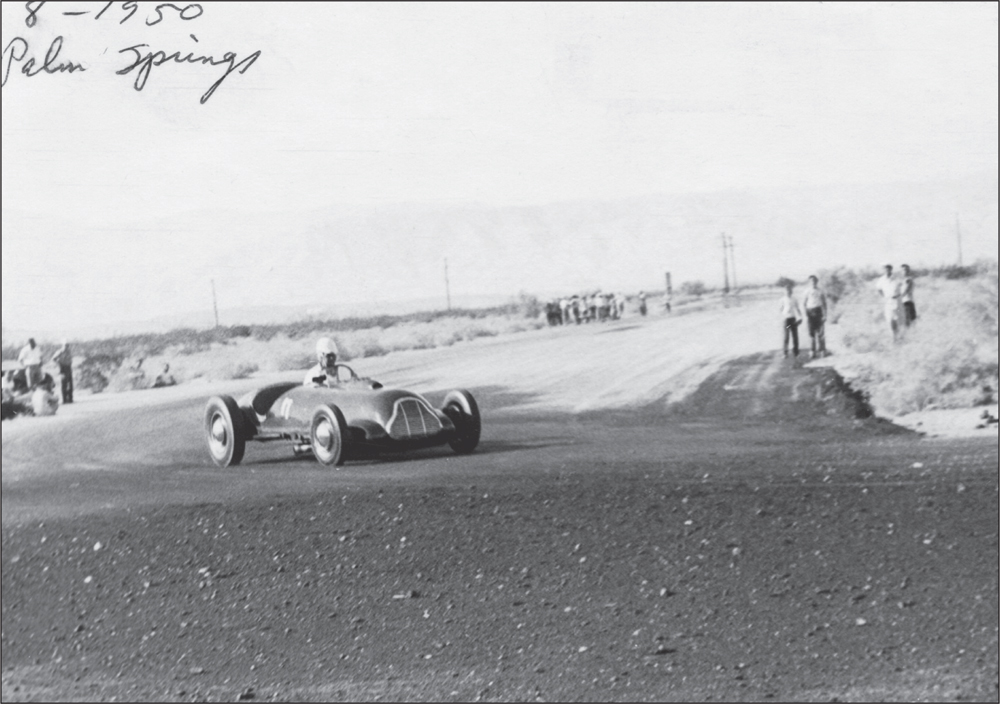
After the special’s completion, the first race it competed in was the SCCA meet at Palm Springs, California, in April 1950. Seen here with Lee Hammock at the wheel, the car was obviously faster and better handling than the competition, but it was plagued with distributor problems and failed to finish. (Courtesy of Lee Hammock.)

Here is Lee Hammock in the Baldwin/Mercury at Palm Springs. This shot shows the red special’s bodywork to good advantage. The hood scoop was made from an old bullet headlamp lengthened with a straight section and covering the generator and carburetors. (Courtesy of Lee Hammock.)

Here, the Baldwin/Mercury is blasting around the warehouse at Goleta while being tested by Lee Hammock. The original engine was a bored and stroked 284-cubic-inch Mercury 59A block equipped with a full-race camshaft, plus Offenhauser heads, manifold, and a triple-carburetor setup. It was hooked up to stock Ford transmission, shortened torque-tube, and 3.78:1 rear end. (Courtesy of Lee Hammock.)
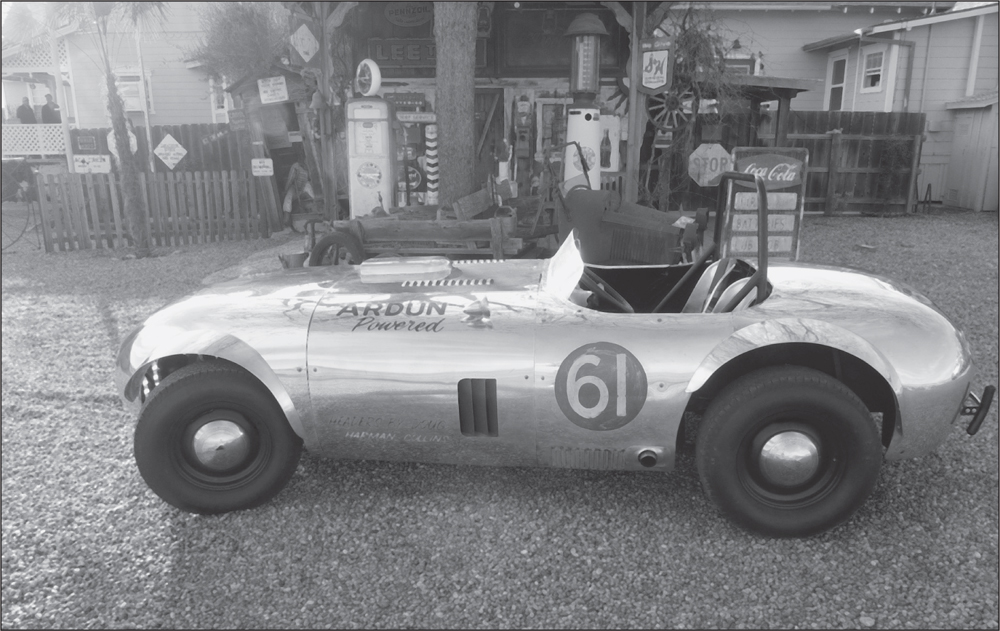
The third Baldwin special, built in 1951, was closer to an Indianapolis Speedway racer in appearance. Following the formula of the second car by using a modified 1947 Ford Tudor frame with stock suspension and a Mercury flathead, Baldwin used his experience as an aviation engineer to fabricate this modernistic aluminum body. (Courtesy of Stu Hanssen.)

In 1954, the third special was sold to Bill Hannsen, the manager of the Walora Ranch in Goleta. Hannsen was an avid sportsman, counting road racing among his many hobbies. After racing a Jaguar XK 120 coupe in the early 1950s, Hanssen purchased the special from Baldwin friend Don Balch. Hannsen raced the special throughout the mid-1950s. In 1956, he was racing at Pebble Beach when his friend and fellow competitor Ernie McAffee was killed driving a Ferrari. Hanssen quit racing after that, and the special was sold a few years later. (Courtesy of Stu Hannsen.)
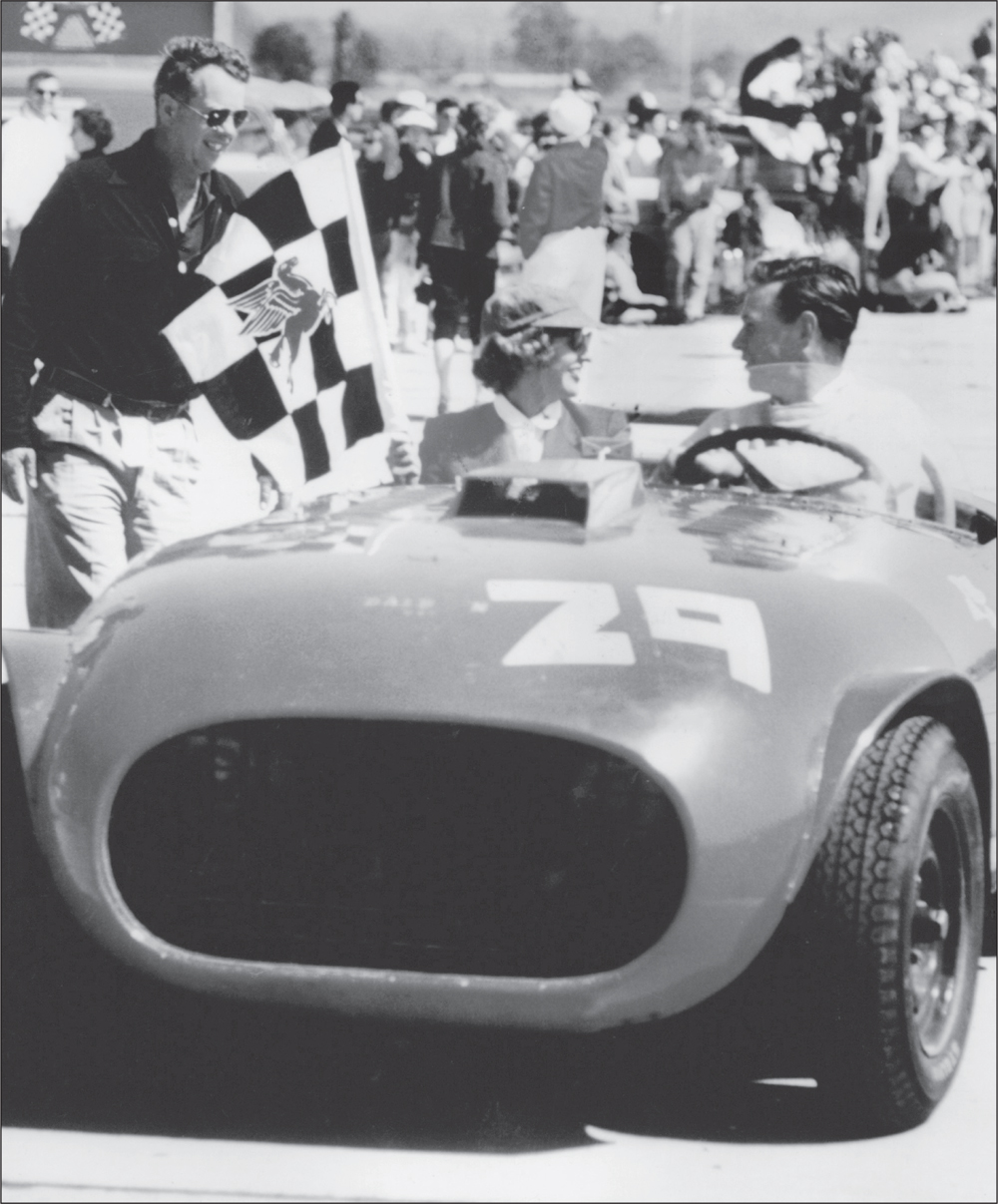
Hannsen is pictured here after having won a March 1956 SCCA meet at Goleta. His wife, Doodie, is sitting to his left, and Clarke Hall is at far left, holding the flag. The third special was sold in the late 1950s, and not much is known of its history until it was discovered on the streets of Los Angeles in the 1970s by automotive artist Baron Margo. It has been restored and is now owned by Hannsen’s son, race car driver Stu Hannsen. (Courtesy of Stu Hannsen.)
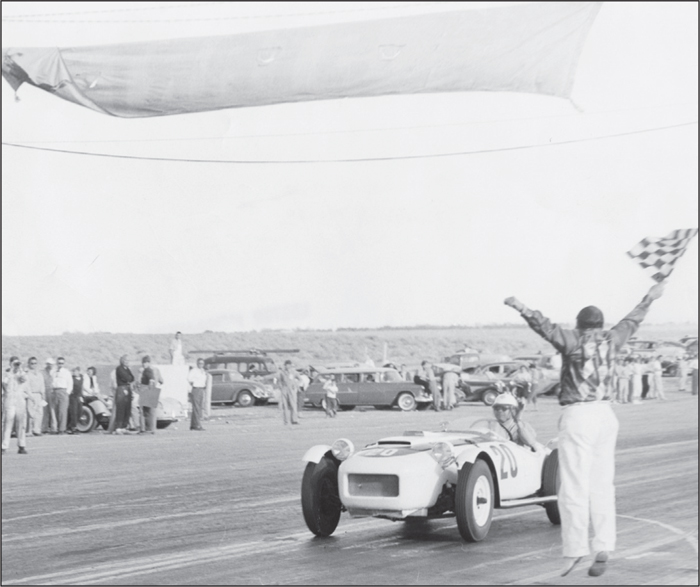
The last of the Baldwin specials was a departure from the way Willis Baldwin had been making race cars. Instead of being constructed of a salvaged Ford chassis, the frame was built up from three-inch exhaust tube stock. Some Ford parts were used in the suspension, and as before, Baldwin powered it with a Mercury flathead and cooled it with a dual-core radiator. The body shell was a fiberglass kit Bangert “Stag” roadster body by Hollywood Plastics. (Courtesy of the Simpson family.)
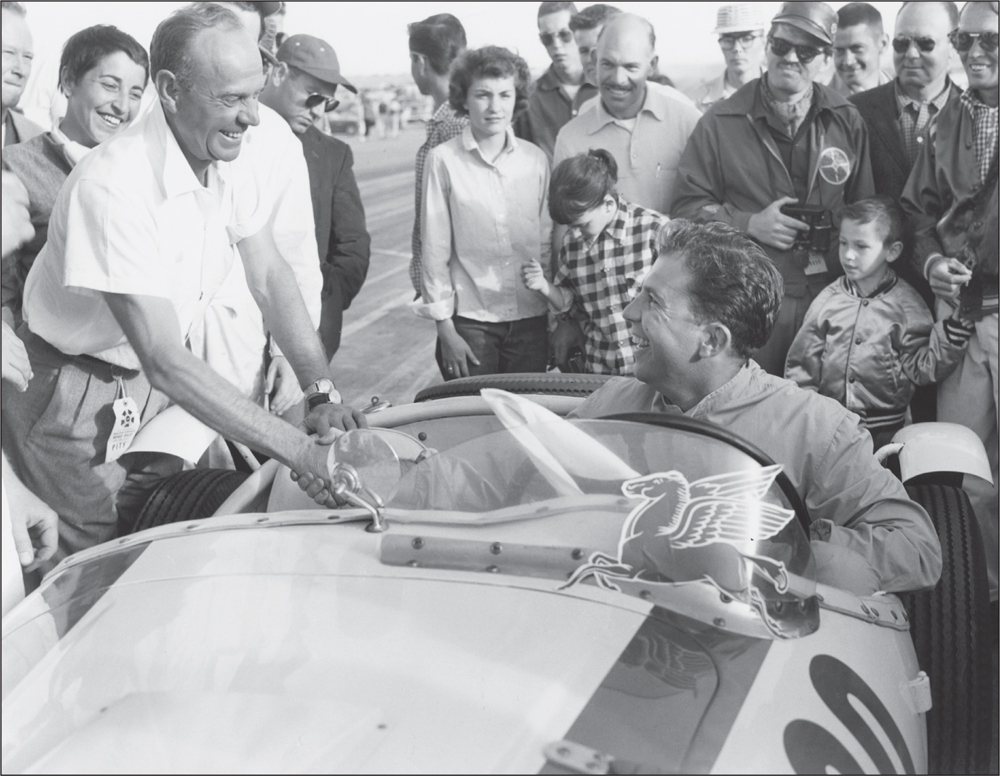
Known as the Baldwin Mark ll Special, it was sold to prominent Santa Barbara resident Ken Simpson. Simpson, using pioneer California road racer Bill Pollack as driver, would race the special at meets all over California, including Santa Barbara, Palm Springs, and Willow Springs. Its current whereabouts are unknown. In this image, owner Simpson shakes Pollack’s hand after a victory at Willow Springs. (Courtesy of the Simpson family.)


















